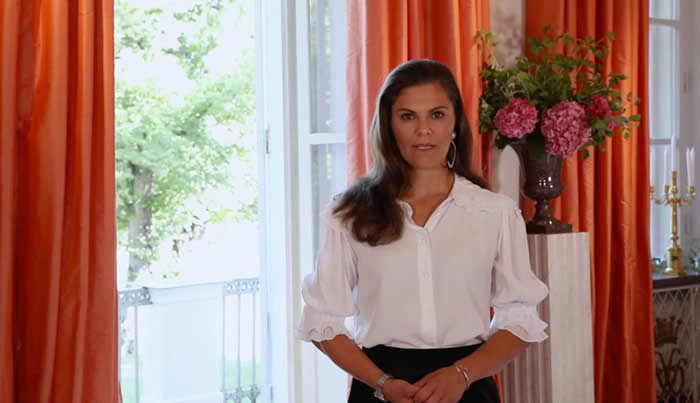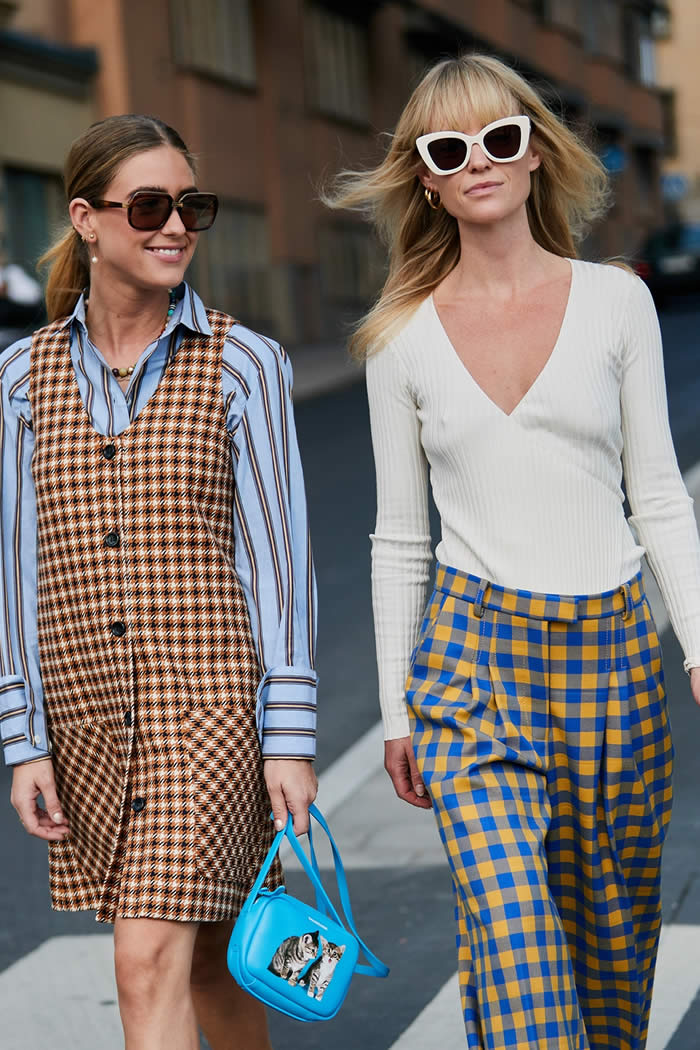It was only last year that Stockholm Fashion Week announced plans to cancel its biannual showcase and become integrated into Copenhagen Fashion Week — the more internationally recognized Scandi fashion event.
But now the showcase is back and show organizers had a lot to contribute to the conversation around the changed fashion landscape.
“We canceled for financial reasons, but decided to come back this year because a digital fashion week would be so suitable for Sweden, which is at the forefront of digital innovation,” said Catarina Midby, secretary general of the Swedish Fashion Association and organizer of Stockholm Fashion Week.
As fashion’s priorities shift toward sustainability, digital innovation and timeless design over seasonal trends, Midby thinks Swedish fashion is well positioned to cater to all these new demands and used the three-day, digital Stockholm Fashion Week to help drive that point home.
“We want to support Swedish fashion and give it the positioning it deserves. We’re doing it to help the industry survive and move beyond COVID-19,” added Midby, who gathered designers, entertainers, sustainability experts — and members of the country’s Royal family to help her lift up the Swedish fashion industry, and the message around the broader industry’s environmental impact.
Victoria, Crown Princess of Sweden and Duchess of Västergötland, inaugurated the event, which ran from Aug. 25 to 27, using her opening speech to remind fashion industry experts that the clock is ticking on dialing back climate change, as well as to urge a shift to more conscious consumption.

“We are fast approaching the deadline for the UN sustainable development goals. As an alumni ambassador for agenda 2030 I am concerned that time is soon running out,” said Princess Victoria. “I think you will agree with me that high-quality fashion does a lot more than please the eye: It challenges new standards, it creates new possibilities. Now, with the challenges ahead of us, it’s not only the clothes you make that have to be innovative but how you make them, as well as how they are sold, distributed and eventually recycled. The fashion industry is getting ready for a digital and sustainable future. We know that we are not going to go back to normal but forward to a new normal, that new normal is something we will have to build together.”
The country’s Minister for Foreign Trade Anna Hallberg also participated in the event, hosting a talk with Midby that was broadcasted live from the Royal Prince’s House and aimed to highlight the importance of the local fashion industry’s contribution, which had an annual turnover of 350 billion Swedish krona, or $40 billion, in 2019.
“For the government, it’s very important for Swedish branding abroad that we have [fashion as a] successful part of the export industry. Individual creators must be given the opportunity to move from the creation phase to the business phase, so from my point of view it’s key to be able to support them in also selling abroad,” Hallberg said.
The rest of the schedule was filled with brands’ digital presentations followed by designer Q&As, panel discussions on key industry issues and a fair share of entertainment, from a music performance by the artist Daniela Rathana to a styling session with Abba costume designer Owe Sandström.
This is by now a familiar format, with London, Milan, Paris and, most recently, Copenhagen Fashion Week, employing similar approaches earlier this summer. What makes Stockholm’s platform stand apart, Midby pointed out, is the broadcasting element: Most presentations and talks happened in real life in the city’s Fotografiska Museum, with an audience of virtual attendees being able to tune in and follow along in real time.
Brands fully embraced the minimalist sensibility Stockholm is known for, delivering edited collections filled with fuss-free wardrobe classics. There were neutral-hued suits, oversize knits and leather separates galore, promoting an approach to dressing that is fast becoming increasingly relevant in the current landscape.
Highlights in the lineup included A Day’s March, a men’s wear brand built around the Scandi flair for minimalist, timeless designs. Following a steady growth trajectory and expansion into retail in Stockholm, the brand is now moving into women’s wear and using the Stockholm Fashion Week platform to debut its first line, by the newly appointed designer Behnaz Aram, an H&M veteran.
Aram was able to design her first collection, filled with mostly unisex staples like cashmere coats and tailoring, amid the COVID-19 outbreak, by relying on local production.
Rodebjer — another local label that has been going strong for 20 years and has recently garnered renewed international attention for its modernist, clean aesthetic — debuted a capsule of upcycled, graphic denim created in collaboration with young Swedish label Iggy Jeans.

“We have to find ways to work more resourcefully since we produce so much,” said the label’s founder Carin Rodebjer. “Customers still long for older pieces, so there’s a lot of added value here. Upcycling in general is going to be key in fashion moving forward.”
Stand, a buzzy label known internationally for its affordably priced leather outerwear, also addressed sustainability in relation to leather production.
“The leathers we are using are all a byproduct from the food industry, but we are always working to get better,” said the label’s founder Nellie Kamras, adding that the brand uses both real and faux leathers. “There’s a customer for both. There are many more benefits to real leather because it’s a natural material. We are trying to find the better faux materials made from recycled polyester but the offer is super limited today.”
For House of Dagmar, which presented a spring 2021 collection of all-white suits, cozy knits and oversized trench coats, sustainability means offering trend-free styles that can be worn for “100 to 200 times” and are made of mostly biodegradable materials, so that when it’s time to let them go, the only thing left is a zipper, some buttons and some thread.
On the last day of the online showcase, David Sandstrom, chief marketing officer of Klarna, which is headquartered in Sweden, joined in to discuss the future of shopping and share data insights from the online payments solution.
He pointed to the consumer’s renewed need for value and security — particularly when it comes to data storage — as well as new ways to engage beyond the two-dimensional e-commerce web site.
“People and merchants are both looking for new ways to connect. Building a web site where you sell stuff is basic e-commerce these days, but how do you then engage people on TikTok how do you create live shopping or gamifications? How do you engage influencers not only as brand builders but really as your sales channels?” said Sandstrom, pointing to the growing importance of social and live shopping, buyable content and a seamless online experience, as consumers now expect a lot more from the brands they buy from.
“We are moving toward a new kind of normal, this is not a pandemic where we closed our stores, reopened and had everything go back to normal. That has dawned on very many consumers and merchants in a good way,” he said. “We’ve gone forward a few years when it comes to digitization. Live shopping, which China has been world leading for a couple of years, is going to explode in Europe and take off even further in the U.S. Rather than seeing crazy AR experiences, I think we’re going to see a clean up of the basic user experience brands offer.”


